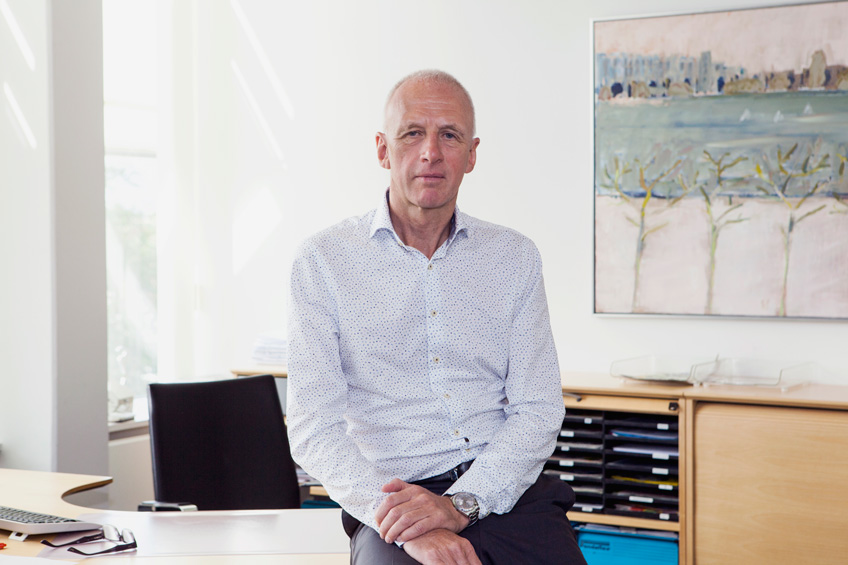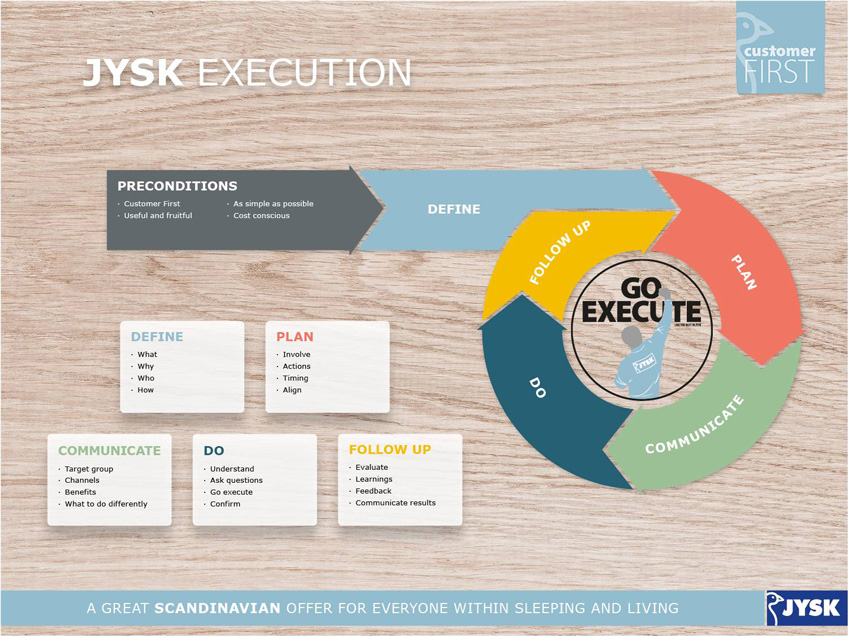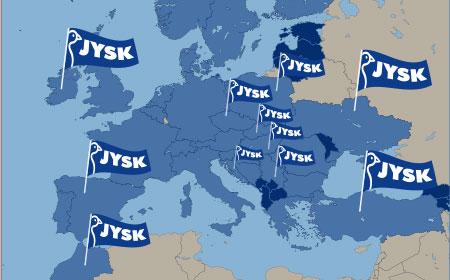Third year for our strategy: Good ideas should be put into practice
On 1 September 2016, JYSK broached the third and final year of its CUSTOMER FIRST strategy. This year, the focus area is on execution. JYSK Execution Model has been developed to ensure that good ideas are put into practice.
The road from the onset of a good idea at JYSK to it being put into practice across all 19 countries can feel long, and many risk being lost along the way. Which is why there must be more focus on execution and implementation at JYSK.
A new JYSK Execution Model, which breaks down the entire process from idea to execution into five steps, has been developed for the purpose. The model shall help to ensure that nothing gets lost en route through the organisation, and that the good ideas get put into practice as originally intended across JYSK’s national borders.
“Good ideas are only good when we succeed in implementing them. Focus on execution in the final part of the strategy is intended to ensure that when we implement something, then it is as close to what we originally intended as possible, regardless of whether it is in the Czech Republic, the Netherlands or Ukraine,” says JYSK Nordic’s Managing Director Jan Bøgh.

“Careful preliminary work is a prerequisite for ensuring the employees in the store get a good experience when we implement new initiatives." - Jan Bøgh
A NEW GAME STRATEGY
Increased focus on execution does not mean however that Competent Service, Attractive Stores and Great Store Management are being sent to the substitute bench. They continue to be important factors in putting the CUSTOMER FIRST.
“Everything that has already been introduced in the strategy will get one more season. I am very pleased with our CUSTOMER FIRST focus, and I am in no doubt that it is alive and well across the entire organisation, and that all employees are working all-in with it,” says Jan Bøgh.
The new Execution Model should be seen as a game strategy, which all the players on the pitch should follow to shoot their ideas and projects safely into the goal. It is also here to exemplify expectations of what is being implemented and give it a common language. Finally, it will also help to put the CUSTOMER FIRST.
“When we whistle up to garden furniture, etc., then it is important that we keep in step, so that the customers meet the same standard, regardless of which JYSK store they shop in. What we say should be what we do,” Jan explains.
10,000 HOURS
He emphasises that the Execution Model must not end up simply as a poster on the wall. Which is why it has already been introduced to some of the relevant employees in February, while it debuted at the JYSK Management Group’s strategy seminar in Himmerland, Denmark in April. Here, everyone was introduced to the idea of actively using the model so that they could go home and pass it onto employees in the respective departments.
“It has been important to set aside plenty of time for the process of developing the model and using energy and resources on training managers to use it. This is the story of the 10,000 hours – we would rather overteach and focus on all the details, so that we can be sure it has stuck,” says Jan, who has focused heavily on producing a unique model that matches JYSK.
Even if, to start with, the model is not directly targeted at the colleagues in the stores, Jan Bøgh believes that the effects of the comprehensive introduction of the model and the increased focus on execution in the strategy will be felt all the way to JYSK’s many stores.
“Careful preliminary work is a prerequisite for ensuring the employees in the store get a good experience when we implement new initiatives. This means that what is presented to them is of high quality, and that everyone has agreed on what their tasks are. We avoid wasting time running back to the stores if we hit the correct target with the projects the first time,” concludes Jan Bøgh.






